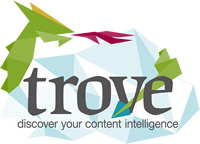Hello colleagues, friends and customers—and a warm embrace to those who are all three.
In 2017, organizations of all kinds (including mine) will face the usual challenges of seeking and managing growth; building sustainability into our products and processes; and offering ever-greater value to our employees, prospects and customers. Some of us may face unusual challenges as well, depending on our industry and the technological and market forces acting upon it.
For those of you in the software realm, you know we’re terabytes-deep into the greatest Cambrian explosion of “development tooling” choices the world has ever seen. Check out: https://trends.builtwith.com for a sampling. Build automation, dependency versioning, continuous integration, linting, unit testing and more—the list keeps growing as tech companies keep innovating and sharing their successful “technology stacks” with the world, and as the Open Source community keeps encountering more complex problems to solve.
This choice comes with a growing cost, however. For a sampling of what and why, this survey of 9,000 developers on Javascript is enlightening: http://stateofjs.com/2016/introduction/#sections. It can be distilled to: it’s awesome to build web-apps, but it’s a huge pain.
There are of course other industries facing weightier problems… healthcare for one, with the escalating national imperative to improve patient outcomes and lower costs. The path to achieve greater value is difficult: health systems must begin to accurately measure true costs of care and actual outcomes, in order to increase efficiency and lower costs, and they are being challenged to maximize value for patients by shifting from fee-for-service to value-based bundled payments. All of these steps require new system-level thinking and new skills—and it is not made easier by today’s pace of technology and regulatory changes.
There are different-but-similar challenges facing our manufacturing customers, our research customers, and our education customers. Each of you knows what the particular, complex, obstinate issues are in your line of work.
And we all know that it’s our people who will achieve the needed successes—those we collaborate with on our product teams, our leadership teams, and our customer success teams—and whether they’re working in Maine or Brazil or in California; as nearby coworkers or remote Max Headroom collaborators… they all are the metaphorical key to solving these current and future problems.
And we try not to adopt this attitude to get everything done smartly:
(That meme/drawing still cracks me up. Allie Brosh drew it in 2010.)
So this brings us to this post’s title: How to find the signal in the noise. It’s a common expression but it is apt: if our people (individually and in cohorts) are the source of every organization’s accomplishments in 2017 and beyond, how do we continuously nurture, measure and preserve their learned skills, insights, and collective wisdom… i.e. can we sharpen their signal in the daily noise of a busy, often-inefficient corporate entity—to benefit their team, the department, other branches, even all of the company’s worldwide sites?
Think of this: their accumulated knowledge and know-how is your organization’s knowledge capital. How are you encouraging its creation, its growth, and its preservation?
My own dedicated, bright team has been engaged for a year with constructing a modern, cutting-edge learning/training system, built on our Trove content portal software. And it’s about to launch this month. One of our innovative customers has embraced it, and indeed championed its creation. A heartfelt thank-you to them for their forward-thinking mindset.
It has potential to enable greater learning and a faster spread of good ideas inside an organization.
I am deeply interested in hearing your own thoughts, my colleagues, friends and customers, about what kind of next-generation knowledge-sharing tools your organization needs to thrive this year and beyond. Send me an email, call, or comment here. And, organizations with ~100 or more members/employees are invited to brainstorm with us as we go forward. Teams at that scale most certainly have things to share.
Because in unusual times, with not-business-as-usual challenges, what we need most is more listening, and new ways of thinking—from everyone on the team.

